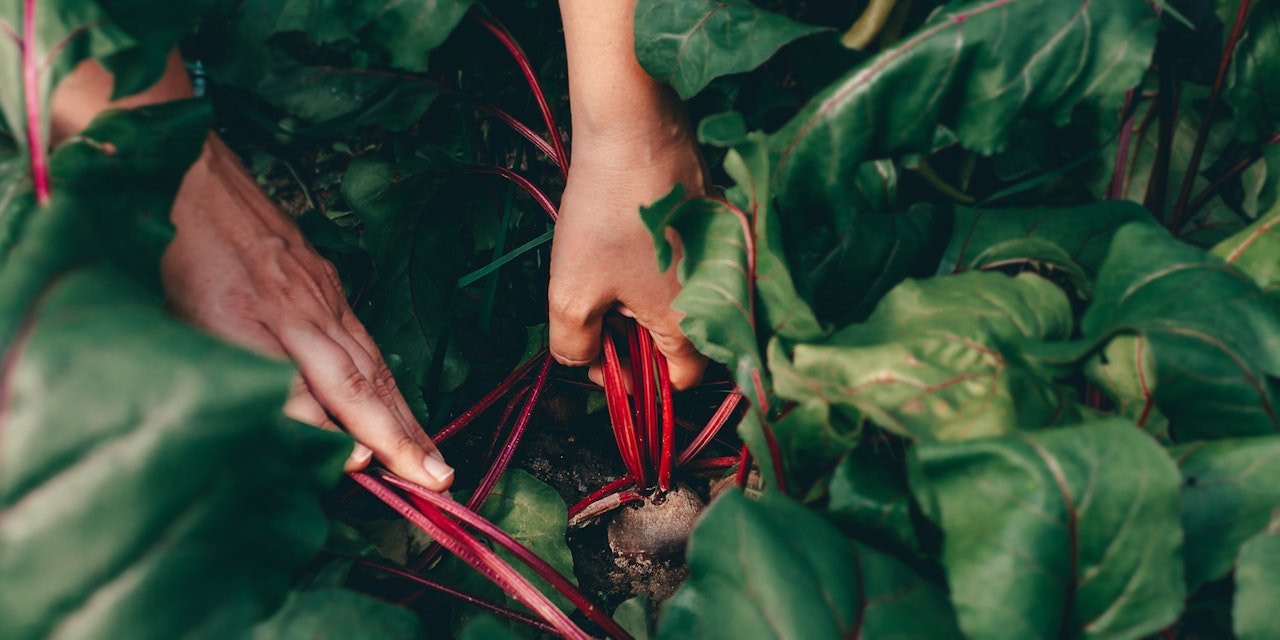How Beets Are Used across Cultures
Beets are transcultural, meaning you can find them being eaten in several ways across many cultures around the globe.
- Published: 11/14/2022
- 4 min. read

- Published: 11/14/2022
- 4 min. read
If you’re a vegetable lover, you might already be familiar with this red root vegetable. What you might not know is that beets are very versatile. People often shy away from beets because of their earthy smell and taste, but with the right recipe and prep, the nutrient-packed vegetable can be made into a tasty meal that could quickly become a staple in your kitchen.
A little fun fact about beets: there’s no part of a beet that can’t be eaten, from its leaves to its red root, which is every sustainable shopper’s dream. Beets can be eaten raw, roasted, sauteed, steamed, ground into a powder and even juiced. For an experimental cook, the beet has endless recipe possibilities.
Beets are also transcultural, meaning you can find them being eaten in several ways across many cultures around the globe, especially in blue zones. People in blue zones, such as Okinawa, Japan, and Ikaria, Greece, have a 95 to 100 percent plant-based diet. Research shows that people in these areas are ten times more likely to live to the age of 100 than in the United States. Although beets are best harvested from June to October, they can be found in your favorite supermarkets year-round.
Here are some of the tastiest ways beets are used around the world.
In Salads Across African Countries
Beetroot is eaten raw in salads alongside other delicious vegetables in many African countries. It can also simply be boiled and eaten with a little bit of salt and butter to take advantage of the vegetable's natural flavors. The South African beet salad is made with a generous amount of boiled beets, carrots, onions and some chili if you like a bit of spice. To the North of Africa the beets can be roasted or steamed, tossed with fragrant spices and served on a bed of lettuce.
As Hummus in Middle Eastern Countries
Hummus is a creamy smooth dip typically made from chickpeas and popularly consumed in Middle Eastern countries. For a fun twist on the traditional hummus, beets can be considered. You can simply add beets to your favorite hummus recipe to achieve this. What results is a delightful creamy pink dip with a hint of sweetness. Perfect for eating with flatbread, vegetables like celery and carrots and chips.
For a Hearty Soup in Eastern Europe
Borscht is a classic winter soup eaten in many Eastern European countries. The main ingredient of borscht? Beets! There are many ways to make borscht, but the most popular way is with beetroot for that signature red look. The soup can be enjoyed either hot or cold, which makes it perfect for cold winter days and warm summer nights. Adding a spoonful of sour cream does wonders to its natural flavors. Meat and other root vegetables such as carrots and potatoes are also added to borscht.
As a Snack in Northern China
Beets are grown in the Nothern regions of China, where the weather is cooler. In those areas, people eat it raw or pickled with some vinegar. Many Chinese recipes also incorporate beets in soups and stir fries.
Tasty Pickled Snacks in Australia
An often overlooked but delicious way to enjoy beets is by pickling them. However, this is no secret to natives of some parts of Australia where picked beets are commonly enjoyed. Beetroot relish is a typical recipe in Southern Australia. It involves boiling finely grated beets in a pot with apples, ginger, onions and spices. When done, it can be eaten on toast, with oats or used as a dip on a charcuterie board.
To Make Patties in Nordic Countries
Biff a Lindstrom is a delightful dish commonly made in Nordic Countries like Sweden. It’s made by combining ground beef with beets to make patties which are then fried and used as meatballs or in burgers. It’s a healthier alternative to your typical beef patty.
For Sweet and Earthy Smoothies
Beets can be added to smoothies for a hint of sweetness and earthiness, which can be enjoyed by smoothie lovers worldwide. Combine it with your favorite vegetables and fruits for a nutrition-packed meal. No matter what you combine it with, the highly pigmented root vegetable almost ensures you end up with a red or pink-hued smoothie.
When it comes down to it, you’ll be hard-pressed to find many vegetables with more versatility than beets. Aside from the endless recipe possibilities, beets are also great for healthy eating and have many medical benefits. They’re rich in antioxidants which protect your cells from damage and help reduce your risk of developing heart diseases. They’re also chock-full of Vitamin C, fiber, folate, iron and potassium. With Lifesum Premium, you can access our extensive recipe database to find and make your favorite beet recipes.
3 references (hide)
All of the content and media on Lifesum is created and published for information purposes only. It is not intended to be used as a substitute for medical advice or treatment. Users should always consult with a doctor or other health care professional for medical advice. If you have or think you are at risk of developing an eating disorder, do not use the Lifesum app and seek immediate medical help.